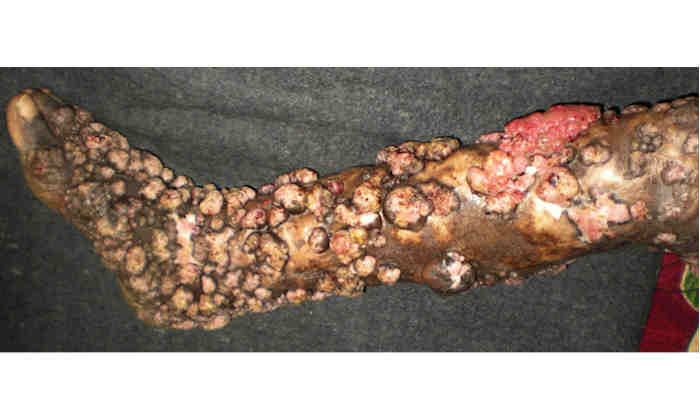Skin condition now recognised by WHO as neglected tropical disease
15 Jun 2017
Campaign led by Global Action for Fungal Infection highlights disfiguring fungal disease

Thanks to research and lobbying undertaken by Dr David Denning, who is based in the Division of Infection, Immunity and Respiratory Medicine, the World Health Organisation (WHO) has added Chromoblastomycosis - a chronic fungal disease of the skin and subcutaneous tissues – to its “Neglected Tropical Diseases” list.
Dr Denning is Director of Global Action for Fungal Infection (GAFFI) who led the campaign for WHO recognition of the disease, which is one of the most prevalent implantation fungal infections in tropical and subtropical regions around the globe.
Chromoblastomycosis (also known as chromomycosis) is a disfiguring fungal disease that is particularly found in rural areas and among poor men aged between 30 and 50 in South America, Africa, and Asia. Although rarely fatal, this mutilating disease frequently results in significant disfigurement and amputation of limbs. Farmers, animal breeders and foresters are most at risk as infection occurs after inoculation of the fungus through the skin of plants or soil contamination.
Oil from the Babassu palm tree is used extensively in the beauty industry.However, the hard skin of the tree’s nuts (similar to coconuts) are a major source of infection. Often contaminated by a brown fungus that causes chromomycosis, when a person’s skin is pierced by the nut's tough strands, a slowly progressive infection develops. The skin becomes intensely itchy and scratching leads to secondary areas of infection, including the face. Many other plants in Madagascar and parts of Brazil carry the same fungus, but treatments are expensive and improved availability is essential.
Dr Denning, Professor of Infectious Disease in Global Health, explains: “This disease most frequently affects the lower and upper limbs and buttocks, although infection has also been reported on the ear, face, neck and breasts. Lesions slowly enlarge becoming verrucose and wart-like with older lesions being tumorous or cauliflower-like in appearance. Unfortunately, most cases are progressive, resulting in disfigurement and social exclusion.
“However, this is an occupational disease and could be prevented with the right clothing and protection and good hygiene advice," he added. “We have been urging WHO to recognise its impact on these workers and their families, and we are delighted that they have listened to our arguments. Now we need to concentrate our efforts on those companies who buy the oil for their products to persuade them to work with us to reduce this debilitating and horrendous disease.”
